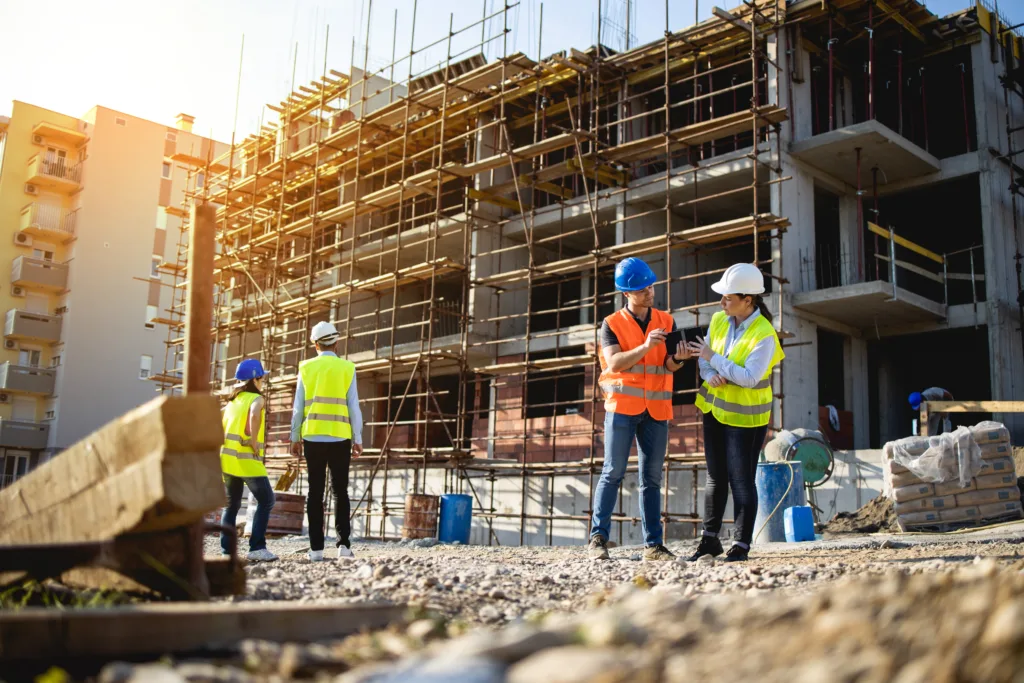The construction industry has been responsible for a significant proportion of the world’s carbon emissions, contributing to climate change and other environmental problems. However, the good news is that there are various ways to make construction sites more sustainable. In this blog post, we will look at seven different strategies that can be employed to create a more sustainable construction site.
Table of Contents
1. Choose Sustainable Building Materials
Sustainable building materials are the first way to create a more sustainable construction site. Sustainable building materials are environmentally responsible throughout their lifecycle, and these materials can be sourced from renewable resources, reused, or recycled. Using sustainable building materials can reduce the environmental impact of construction by reducing carbon emissions and waste.
Some examples of sustainable building materials include:
- Timber from sustainable forests: Timber is a renewable resource that can be sourced sustainably. Timber from sustainably managed forests has a lower environmental impact than other building materials.
- Recycled materials: Building materials such as glass, metal, and plastic can be recycled and used in construction. Recycled materials have a lower environmental impact than materials made from virgin resources.
- Low-carbon concrete: Concrete is a widely used construction material responsible for a significant proportion of carbon emissions. Low-carbon concrete can be made by reducing the cement or using alternative materials such as fly ash or slag.
- Low VOC paints: Volatile organic compounds (VOCs) are chemicals that can harm the environment and human health. Using low-VOC paints can help to reduce the amount of VOCs released into the environment.
- Bamboo: Bamboo is a renewable resource that grows quickly and requires little energy to harvest. It is also robust and durable, making it an excellent construction material.
By choosing sustainable building materials, construction sites can reduce their environmental impact and contribute to a more sustainable future.
2. Reduce Energy Consumption
Construction sites use a significant amount of energy for site operations and the construction process itself. Reducing energy consumption on construction sites can help to reduce carbon emissions and save money.
There are several ways to reduce energy consumption on construction sites, including:
- Use energy-efficient equipment: Energy-efficient equipment, such as LED lighting and low-energy machinery, can help to reduce energy consumption on construction sites.
- Use renewable energy: Renewable energy sources such as solar panels and wind turbines can be used to power construction sites.
- Improve insulation: Improving insulation in buildings can reduce the amount of energy needed for heating and cooling.
Reducing energy consumption on construction sites can have significant environmental and financial benefits.
3. Minimize Waste
Construction sites generate a significant amount of waste, including construction debris, packaging materials, and other materials. Minimizing waste on construction sites can reduce the environmental impact of construction and save money.
There are several ways to minimize waste on construction sites, including:
- Use prefabricated components: Prefabricated components are manufactured off-site and assembled on-site. This can help to reduce waste by minimizing the amount of construction debris generated on-site.
- Recycle waste: Recycling construction waste, such as concrete, metal, and wood, can help to reduce the amount of waste that ends up in landfills.
- Reduce packaging: Reducing the amount of packaging used on construction sites can help to reduce waste. Materials can be delivered in reusable containers, and packaging materials can be recycled.
- Composting: Organic waste, such as food scraps and plant waste, can be composted and used as a fertilizer.
By minimizing waste on construction sites, the environmental impact of construction can be reduced, and costs can be saved.
4. Manage Water Use
Water is an essential resource often used in large quantities on construction sites. Managing water use on construction sites can help to conserve water resources and reduce the environmental impact of construction.
There are several ways to manage water use on construction sites, including:
- Collect rainwater: Rainwater can be collected and used for non-potable purposes such as site cleaning and dust suppression.
- Use low-flow fixtures: Low-flow fixtures can help reduce water consumption on construction sites.
- Use water-efficient landscaping: Water-efficient landscaping, such as xeriscaping, can help reduce the water needed for landscaping on construction sites.
By implementing a water management plan, you can reduce the amount of water consumed, leading to significant cost savings and a reduced carbon footprint.
5. Prioritize Sustainable Transportation
Transportation is a significant source of carbon emissions and other environmental problems. Construction sites can contribute to sustainable transportation by prioritizing sustainable modes of transportation for workers and materials.
Some examples of sustainable transportation options for construction sites include:
- Electric vehicles: Using electric vehicles for construction site transportation can help reduce carbon emissions.
- Public transportation: Encouraging workers to use public transportation, such as buses and trains, can help reduce transportation’s environmental impact.
- Cycling and walking: Encouraging workers to cycle or walk to the construction site can also help reduce transportation’s environmental impact.
By prioritizing sustainable transportation options, construction sites can help reduce transportation’s environmental impact and contribute to a more sustainable future.
6. Implement Green Design Strategies
Green design strategies are design strategies that prioritize sustainability throughout the construction process. By implementing green design strategies, construction sites can reduce their environmental impact and create more sustainable buildings.
Some examples of green design strategies include:
- Passive solar design: Passive solar design uses the natural heat and light from the sun to heat and cool buildings. This can help reduce the energy needed for heating and cooling.
- Natural ventilation: Natural ventilation uses natural airflows to cool buildings, reducing the need for air conditioning.
- Green roofs: Green roofs are roofs that are covered with vegetation. Green roofs can help to reduce the amount of heat absorbed by buildings, reducing the need for air conditioning.
By implementing green design strategies, construction sites can reduce the environmental impact of construction and create more sustainable buildings.
7. Educate Workers and Contractors
Finally, educating workers and contractors about sustainable construction practices can help to promote sustainability on construction sites. By educating workers and contractors about the importance of sustainability, construction sites can create a culture of sustainability that can help reduce construction’s environmental impact.
Some examples of topics that can be covered in education and training programs include:
- Sustainable building materials
- Energy conservation
- Waste reduction
- Water management
- Sustainable transportation
- Green design strategies
By educating workers and contractors about sustainable construction practices, construction sites can help to reduce their environmental impact and contribute to a more sustainable future.
8. Reduce noise pollution
Construction sites can be incredibly noisy and a nuisance to nearby residents. Noise pollution can also significantly impact wildlife, disrupting their habitats and behavior. Minimizing noise pollution is essential in creating a more sustainable construction site. One way to reduce noise pollution is to use noise barriers. These barriers can reduce the noise that escapes the construction site, reducing the impact on nearby residents and wildlife.
Conclusion
Creating a more sustainable construction site is a critical step towards reducing the environmental impact of construction and contributing to a more sustainable future. The construction industry must continue to innovate and find new ways to create sustainable construction sites. This can be achieved through research and development of new materials and technologies that have a lower impact on the environment.
By using sustainable building materials, reducing energy consumption, minimizing waste, managing water use, prioritizing sustainable transportation, implementing green design strategies, and educating workers and contractors, construction sites can significantly contribute to sustainability. By implementing these strategies, construction sites can reduce their environmental impact, save money, and contribute to a more sustainable future.
Related posts
Read our other articles where you can find useful and relevant information about improving your construction site efficiency:
- 10 Tips on How to Improve Construction Site Efficiency
- Enhancing Construction Efficiency: Key Factors and Strategies
About the Author

Taavi Kaiv
Taavi Kaiv is a construction specialist with over ten years of experience in the construction industry. Taavi is an accomplished construction project manager with many successful projects that have been completed under his guidance. Taavi holds a master’s degree in construction management from the Tallinn University of Technology. View profile





